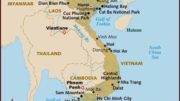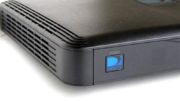If you’re around DIRECTV people long enough you’ll hear them talk about the Ka band and the Ku band. (For the record, they’re pronounced “kay-ay” and “kay-you” not “kah” and “koo.”) What are these funny sounding things and why should you care?
How radio waves are named
Since even before the second World War, different parts of the radio spectrum have had letters as names. When you’re planning and designing broadcast towers you need a quick way of describing what you’re doing. You’ve heard terms like “VHF” and “UHF,” these are part of the original designations. They aren’t very helpful for frequencies higher than UHF, though.
See, with the technology of the day, anything above the AM radio bands was considered “high frequency (HF.)” Higher than that, where TV broadcasting starts, was “very high frequency (VHF.)” Even higher, when the technology allowed, was “ultra high frequency (UHF.)”
Even back in the 1940s it was understood that broadcasts would someday go above 800MHz. So, frequency ranges were created and given names that engineers could use to save time.
Of course it was a very paranoid time and just naming them A through Z from lowest to highest was off the table. In order to confuse the enemy, whatever enemy there was at the time, the bands were named (in order) I,G,P,L,S,X,K,Q,V, and W. Don’t ask me why, they just were.
And then it gets really confusing
It took about 20 years before anyone could really even think about broadcasting in the K band, which was originally from 20,000MHz to 40,000MHz. When they did, they discovered something kind of unpleasant. It turns out that the middle of the K band, at about 22,200MHz is pretty much useless. It has to do with the size of the radio wave and the size of water molecules. They interact and basically you can’t use those frequencies for too much. It’s expensive and difficult (even today) to broadcast up in those frequency ranges and so for the most part that chunk of the K band isn’t used.
Engineers, ever the clever ones, needed another quick way to explain what part of the K band they actually wanted to use. They started talking about “K-under” and “K-above” meaning frequencies under that 22GHz problem area or frequencies above that 22GHz problem area. Eventually those were abbreviated Ku and Ka, and even more commonly seen as Ku and Ka because people don’t like to push that little button that says “subscript.”
For the record, Ku-band means the range from 12-18GHz, while Ka-band is the range from 26.5-40GHz. The middle is still referred to as the K band although it’s largely unused.
Ku band is for satellites
Today’s direct-to-home satellite systems were designed in the 1990s and at that time, the Ku-band was the perfect place for all that broadcasting to take place. It wasn’t used for much of anything and it had space for a lot of channels, by 90s standards anyway. Pretty much every home satellite system in the world uses the Ku-band including DIRECTV and DISH. Except…
Ka band is also for satellites if…
DIRECTV has the exclusive North American license for the Ka-band when used for home satellite television. This license makes it possible for DIRECTV’s fleet of satellites to cover the US without the need for two seperate fleets on the coasts. Because the Ka-band is wide open it can support thousands of TV broadcasts. In comparison the Ku-band is pretty much topped out at about 2,000 broadcasts.
That may seem like a lot but remember we’re talking about every local channel in the country, all the national ones, plus all the on demand and special event channels, for both DIRECTV and DISH. And keep in mind that the system was designed for standard-definition, not high-definition which takes up more “space” when you broadcast it.
Ka band is also for 5G cellular
The next generation of phones will also use the Ka band. This will enable wireless data speeds faster than wired internet, because there is still a lot of open capacity in the Ka-band. However as I said it’s still a challenge to broadcast in that range because of the power issues and I suspect this is part of the reason that we aren’t seeing widespread 5G yet.
Do you need Ka and Ku?
If you’re a DIRECTV customer, you do. Your satellite dish receives both, unless it’s very old. If you’re currently getting high definition programming over DIRECTV then you already have what you need.
DISH customers don’t need to worry about this because only DIRECTV has that Ka-band license. However DISH customers need to be aware of whether they need a Western Arc or Eastern Arc dish. Of course that’s another issue.





